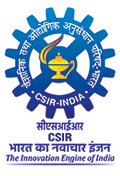Study of microstructure and texture evolution in low carbon formable steels
Objectives
- Study the microstructure and texture evolution in low carbon formable steels (Boron containing steels, Nb-Si containing steel and Dual phase Steel)
- Establish correlation between texture and formability of low carbon formable steels.
- Developing expertise at RDCIS on EBSD/texture studies
Technical Details
- The scope of the work was to examine and analyse developed microstructure and texture of hot and/or cold rolled annealed steel of following three grades of steels:
- Grade A: Low Carbon (0.06 % max) Aluminium killed Steel
- Grade B: High Strength Low Carbon Micro-Alloyed Aluminium killed Steel
- Grade C: Dual Phase steel
- The steel samples wassubjected to annealing simulation, batch annealing and continuous annealing cycles. Evaluation of microstructure and texture using Transmission Electron Microscope (TEM), X-Ray Diffraction (XRD) and Electron Back Scattered Diffraction (EBSD) of hot and cold rolled un-annealed and annealed (simulated, batch and continuous) samples of identified grades.
- A correlation was established between mechanical properties, microstructure and texture of identified grades of steel under hot rolled and cold rolled batch & continuous annealed condition.
Fruitful Interaction with RDCIS Engineers was there for expertise development on EBSD/ microtexture at RDCIS.
Achievement (Output/outcome)
A very high plastic anisotropy has been achieved to the level of rm =2.45 by optimization of annealing cycle in grade A steel with boron by nitrogen ratio (B/N=0)
A joint patent between CSIR-NML and RDCIS-SAIL has been filed on “A PROCESS FOR PREPARATION OF LOW CARBON Al-KILLED, BATCH ANNEALEDDEEP DRAWABLE STEEL”
A insight and understanding has been developed on the synergistic effect of Nb and Si addition on microstructure texture and mechanical properties of high strength formable quality grade steel. A good combination of strength and ductility was achieved in Grade B steel with (Nb+Si wt. %)=0.304
A dual phase(DP) ferrite-martensite microstructure has been obtained in Grade C steel having UTS of 864 MPa and total elongation of 11%.
Impact
For Grade A steel processed through optimized Batch Annealing cycle , have resulted into strong gamma fibre and thereby very high plastic anisotropy (rm ) to the level of 2.45, reported for the first time in EDD steel and in fact are comparable to that of IF/IF-HS.
For Grade A steel processed through optimized Continuous annealing cycle, has resulted into emergence of high strength cold rolled grade steels with YS > 370 MPa, UTS > 430 MPa, YS/UTS : 0.86, % El > 21 and rm >1.88
A understanding was developed on the synergistic effect of Nb and Si on microstructure, texture and properties in grade B steel.
An insight was developed on microstructure-property evolution with varying annealing treatment in dual phase steel.
 | Fig1 showing ODF section at φ2 = 45o on the RD-TD plane, of the optimized annealed cycle sample from GRADE A (B/N=0) illustrating fully developed γ-fibre beneficial for deep drawing |
 | Fig2 showing good combination of strength and ductility was achieved in Grade B steel with (Nb+Si wt. %)=0.304 |
 | Fig3 showing a dual phase(DP) ferrite-martensite microstructure obtained in Grade C steel . |






